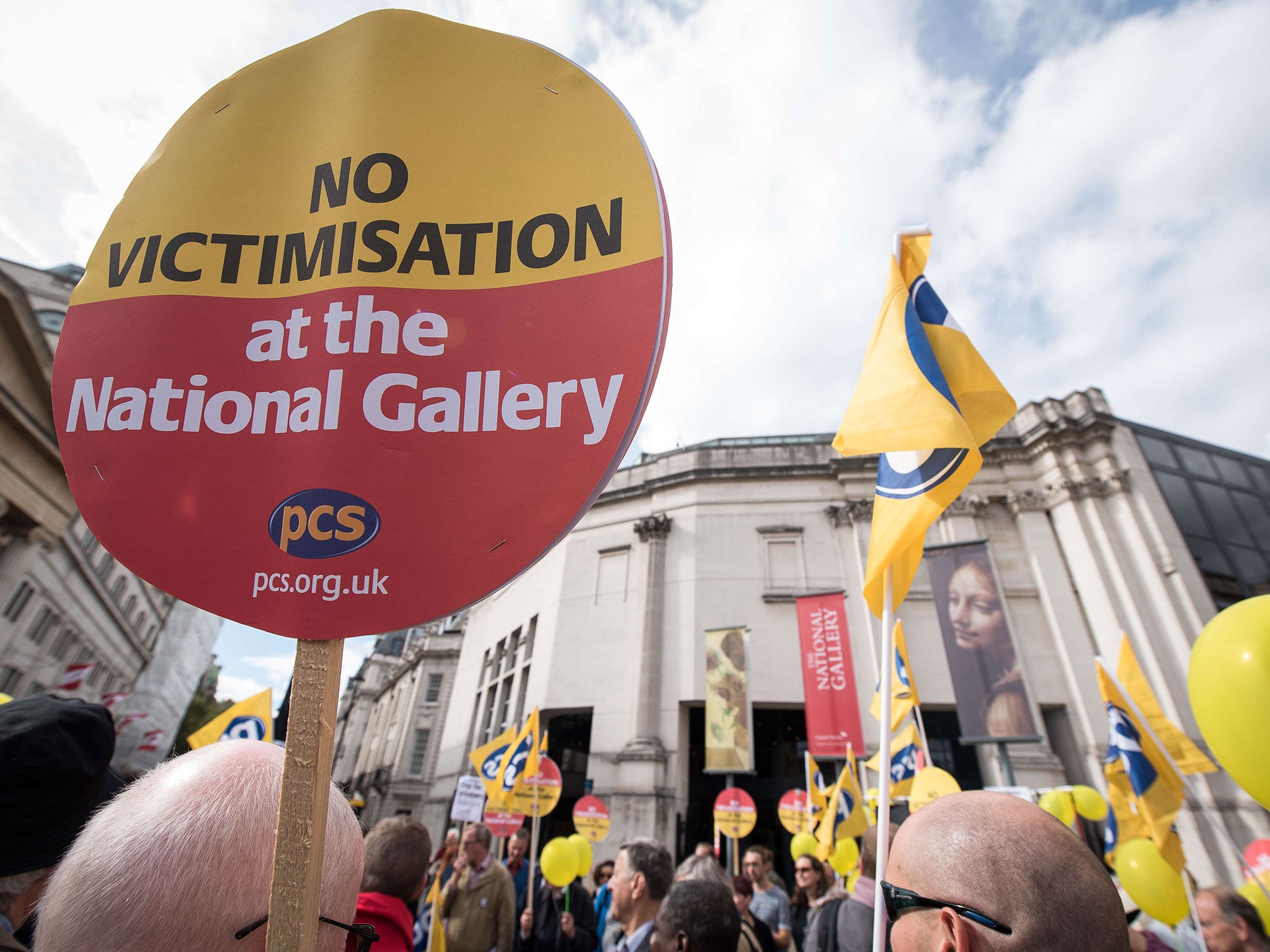National Gallery strike: Director Gabriele Finaldi hopeful disruptive action will end soon
Since the strike became continuous there has been a significant fall in the number of people visiting the gallery

Your support helps us to tell the story
From reproductive rights to climate change to Big Tech, The Independent is on the ground when the story is developing. Whether it's investigating the financials of Elon Musk's pro-Trump PAC or producing our latest documentary, 'The A Word', which shines a light on the American women fighting for reproductive rights, we know how important it is to parse out the facts from the messaging.
At such a critical moment in US history, we need reporters on the ground. Your donation allows us to keep sending journalists to speak to both sides of the story.
The Independent is trusted by Americans across the entire political spectrum. And unlike many other quality news outlets, we choose not to lock Americans out of our reporting and analysis with paywalls. We believe quality journalism should be available to everyone, paid for by those who can afford it.
Your support makes all the difference.The National Gallery’s new director, Gabriele Finaldi, has expressed his hope that the strikes that have affected the institution for much of the year will soon be over.
His comments came as new figures revealed that visitor numbers had plunged by more than a third in August owing to disruptions at its site in Trafalgar Square, London.
Mr Finaldi took over in August, as the Public and Commercial Services Union (PCS) began continuous industrial action over plans to privatise the visitor services. The action led to the closure of more than half of the gallery.
Since the strike became continuous, nearly 317,000 people have visited the National Gallery – a 35 per cent fall since the same period in 2014, when 485,000 visited.
The PCS opposes the deal the National Gallery has signed with Securitas to privatise some visitor and security services. The National Gallery said it was one of the last major national museums and galleries to take the step.
Mr Finaldi, however, said earlier this week that he hoped the gallery would be back to normal soon.
“We’ve tried very hard to keep as much of the gallery open as possible,” Dr Finaldi said. “It has been difficult for the gallery and difficult for the staff but we felt it was a necessary move.”
He said the Securitas contract was signed in early August and would come into effect at the start of November. “My concern as director is that the transition happens as smoothly as we make it happen.”
He added that he hoped the National would be “completely open and functioning normally... quite soon”.
A PCS spokesman told the BBC that talks with the National Gallery had made “good progress” and that the union was “hopeful of a resolution shortly”.
The previous director, Nicholas Penny, oversaw a period of growth at the National, with a record 6.4 million visitors last year, and was responsible for exhibitions such as Leonardo da Vinci: Painter at the Court of Milan, which prompted visitors to queue overnight.
Yet his legacy was threatened as the dispute with staff over privatisation blew up, dragging on into the new director’s stewardship.
Join our commenting forum
Join thought-provoking conversations, follow other Independent readers and see their replies
Comments